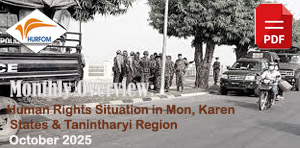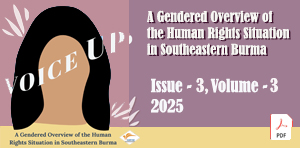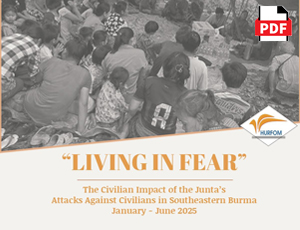Border-town Malaria Rates Rise
June 27, 2008
By HURFOM:
The number of malaria patients among Burmese migrants on the Thai-Burma border has dramatically increased this month, said a health worker from the Mae Tao Clinic based in Mae Sot, Thailand.
“More than 180 patients visit our clinic each day, and our blood tests are revealing around 30 people per day are infected with malaria. Just last month we found over 1,000 people had malaria,” said Sarkbaw, the operations manager at the Mae Tao clinic.
Another clinic staffer went on to say that many of the patients were not familiar with the area and so did not know how to reduce the risk of being infected. The border is a high-risk area for malaria, more so than many of the inland villages they have traveled from.
Dr. Cynthia Maung’s Mae Tao clinic is now suffering from a shortage of available beds due to the influx of patients with malaria; they are currently treating over 100 patients infected with the mosquito-borne illness.
Malaria is extremely dangerous and can prove fatal if not detected early; even with treatment three people suffering from malaria died last month at the Mae Tao clinic and Three Pagodas Pass also on the border in Thailand’s Kanchanaburi Province reported similar numbers.
With an outbreak already evident, staff at Mae Tao are concerned about the upcoming rainy season when a high number of malaria-related deaths are usually expected.
According to the Shoklo Malaria Research Unit based in Mae Sot, during the rainy season breeding grounds for malaria-carrying mosquitoes emerge, especially in areas like Mae Sot where heavier rainfall contributes to a higher population of mosquitoes.
Their research supports the on-the-ground reports of a higher incidence of malaria. According to a Mae Tao senior medic the statistics produced from research they conducted through an anti-malaria program on the Thai-Burma border show an increase in infection rate from last year to this year.
Comments
Got something to say?
You must be logged in to post a comment.



















































